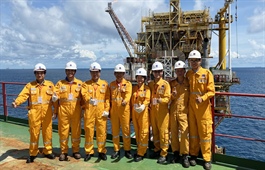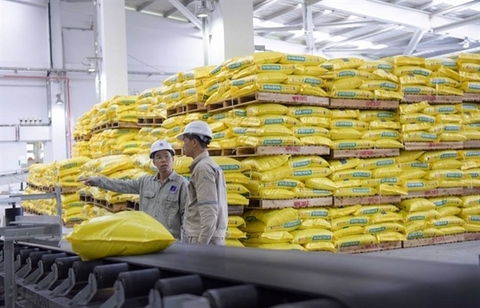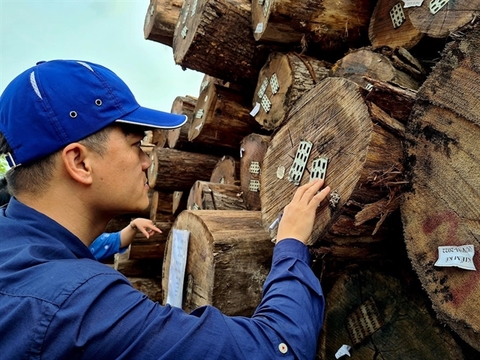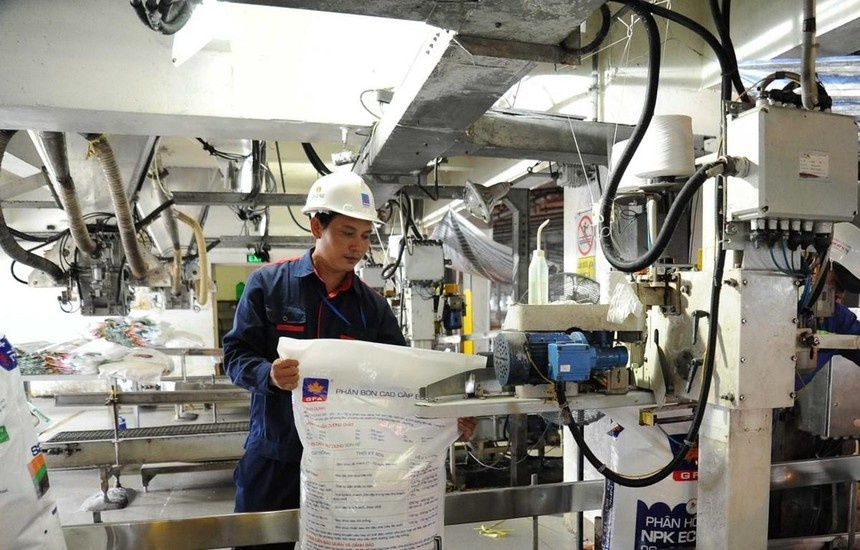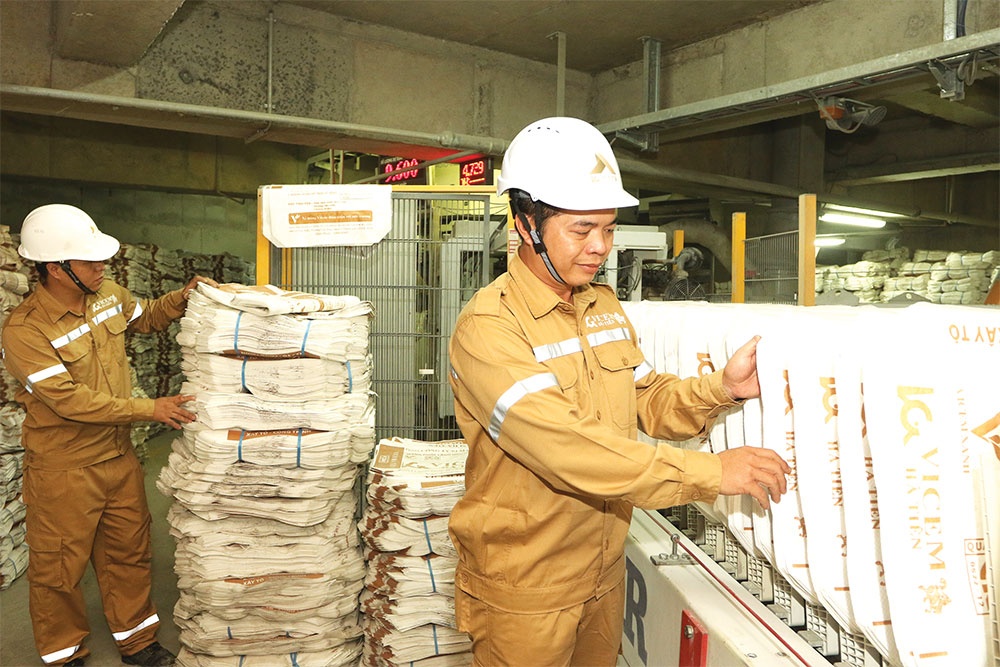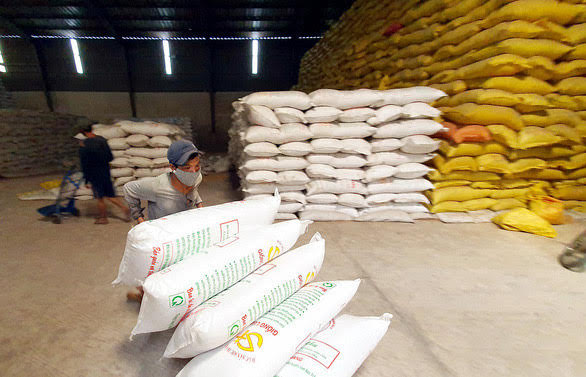Steel producers face gloomy business results despite huge potential
Steel producers face gloomy business results despite huge potential
With the development of the Vietnamese economy and better living standard of citizens, the demand for steel in industries like construction, automobiles and household goods, is increasing. The fast growth in steel demand has lured many steel producers to build new production facilities in Viet Nam.
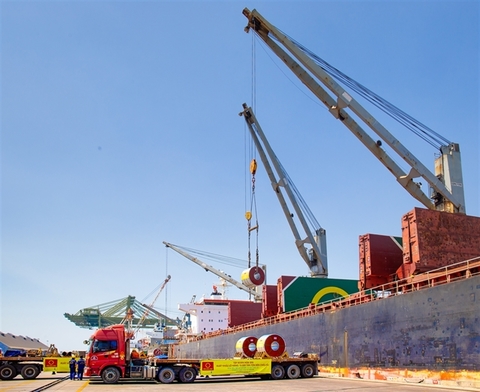
A report from Research and Markets showed that the domestic steel industry has more than 100 companies, including large enterprises like Hoa Phat Group, Hoa Sen Group, Viet Nam Steel Corporation, SMC Trading Investment JSC, and Formosa Ha Tinh Steel Corporation.
In 2021, the country's crude steel output reached 26.15 million tonnes, a compound annual growth rate (CAGR) of 32.7 per cent from 2013 to 2021.
According to experts, many firms have invested in the domestic steel industry in recent years after realising the great potential of the Vietnamese and Southeast Asia steel markets. Of which, Formosa Ha Tinh Steel, which is the largest investment, is a joint venture between Formosa Plastics Group, China Steel Corporation and Japan's JFE Holdings with an investment capital of more than US$10 billion in the first phrase.
The rapid increase in the steel sector's production capacity in recent years has resulted in a glut in some steels, such as construction steels or irons, and cold rolled steel.
With a large decline in imports of hot rolled coils and electromagnetic plates, the Government is attracting foreign investors to build positions in the country.
Even though the Government currently has not issued a national policy for foreign investment in the steel industry, steel producers have been setting up in many industrial zones in Viet Nam, enjoying preferential policies in tax and other aspects.
Moreover, due to the rapid growth of the country's manufacturing and construction industries, the demand for steel will continue to rise. It is estimated that, during 2022-2031, Viet Nam's roads, airports and other infrastructure, housing construction, automobile, household goods and other industries will all remain at a high growth rate.
Analysts believe that the Vietnamese steel market will become one of the world's fastest-growing markets in 2022 - 2031. Meanwhile, the compound annual growth rate of crude steel output is expected to exceed 15 per cent. By 2024, Viet Nam will become a net exporter of steel.
Gloomy business results, activities
The huge potential market is mainly driven by large investments and favourable tax policies. However, recent business reports of large enterprises in the industry cited that the business picture in the third quarter of 2022 of these enterprises is gloomy with large losses.
Recently, VNSTEEL - Vicasa JSC has just announced its financial report for the third quarter of 2022 with poor business results. Specifically, during the period, the business recorded net revenue of VND477.2 billion ($19.2 million), a nearly 18 per cent decrease over last year.
Doing business below cost of goods sold with higher expenses caused the company to witness a loss of nearly VND22 billion, the largest quarterly loss since 2009.
For the first nine months of the year, Vicasa's net revenue was down 4 per cent to VND1.84 trillion, but posted a net loss of VND13 billion. In the same period last year, it still made VND42 billion in profit.
“The Russia-Ukraine crisis, China's policies and global inflation have impacted the domestic steel and construction industries. Besides, as banks tighten credit room for the real estate sector, the demand for steel reduces," the company explained.
Thai Nguyen Iron and Steel JSC (Tisco) has also announced the third quarter financial report with poor results.
Tisco's sales reached VND2.6 trillion, but cost of goods sold accounted for nearly 100 per cent of the indicator. After deducting operating expenses, Tisco's profit in the third quarter was negative VND25 billion, while last year it was positive VND9 billion.
In the first nine months, the company reported a profit of only VND7 billion, while in the same period of 2021, it was more than VND112 billion.
Meanwhile, Pomina Steel Corporation announced a halt to production activities at a blast furnace, and had to terminate labour contracts with a number of officials and employees. Leaders of Pomina Steel said that the business has suffered heavy damage due to the negative impacts of the Ukraine war that escalated the price of oil and commodities, whereas the value of steel and steel billet products fell sharply.
In general, the business picture in the third quarter of steel industry enterprises is gloomy.
Uncertainties from geopolitical crises in the world and China's zero COVID policy are considered to be the main causes for the business results of steel producers. In addition, there are still many difficulties ahead as the actual domestic demand for steel remains at low level.



